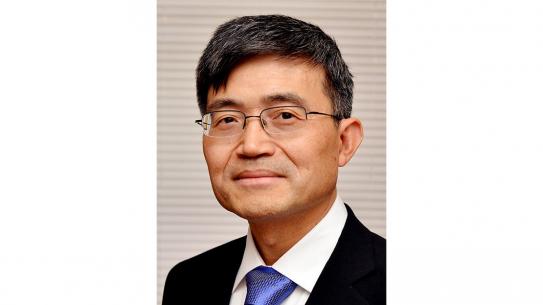Astronaut Teaches High School Students To Fail in Order To Create

This week 50 promising high school students from around the region will learn the joys of engineering, NASA-style. For seven weeks they’ll troop to NYU-Poly to study an engineering dilemma NASA grapples with today: how to design a space suit for Mars. Dr. Charles Camarda, NYU-Poly distinguished engineer in residence, NASA astronaut, and NYU-Poly alumnus, will guide their explorations by teaching problem-solving techniques that focus on developing innovative, multidisciplinary responses instead of memorizing tested solutions. In other words, Dr. Camarda doesn’t have a pre-designed Mars space suit to reveal at the end of class.
“As a student, I would rather not be given a textbook-problem,” he says. Given a predicament with no set solution, “you can try things and fail. That’s what the joy of engineering is all about. As a matter of fact, failure is not an option, it’s a requirement.”
And in the spirit of engineering, Dr. Camarda first tested his idea for the course among young NASA engineers in 2007. For five days he and his colleagues joined leading experts in related fields to tackle a problem NASA had yet to solve — a contingency plan for landing the Orion capsule on land versus sea — and, while no implementation-ready solution resulted, attendees proposed recommendations notable for their number and diversity. In fact, one of the ideas was later funded as a collaborative research effort of two universities, Penn State and MIT.
NYU-Poly undergraduates, emboldened by NYU-Poly’s i-squared-e philosophy (invention, innovation, and entrepreneurship) also came up with promising recommendations when Dr. Camarda taught the course here last summer. He hopes for similar results among high school students this year.
That age group is of particular concern to Dr. Camarda, NYU-Poly, and other educators who encourage interest and excellence in STEM (science, technology, engineering, and mathematics) subjects among students in grades K-12. According to the American Society for Engineering Education, undergraduate enrollment in the engineering disciplines decreased dramatically in 2007, and the trend is only predicted to continue. “A national crisis,” says Dr. Camarda about the forecast.
“Engineering is tough,” he says. “We lose students because they think, ‘Hey, I’m not a math expert,’ but they don’t really have the passion to try.”
“I’m trying to stoke the passion and inspire these kids to say, ‘You know what? Problem-solving is fun.’ Don’t just think of engineering as solving equations,” Dr. Camarda continues.
Dr. Lawrence Kuznetz, UC Berkeley professor and Apollo life science and space suit expert, and some of the same luminaries that led the NASA sessions in 2007 will join Dr. Camarda in his efforts: Jeanette Yen, who directs the Center for Biologically Inspired Design at Georgia Tech, Jack Matson who initiated the Leonhard Center for the Enhancement of Engineering Education at Penn State, and Sven Bilen, department head of systems engineering at Penn State. Together they’ll teach “the mechanisms of failure,” as Dr. Camarda puts it, understanding full well the difficulties budding engineers may have with the approach. “It’s very tough for young, intelligent, high-performing people to come up with an idea and point to all its warts and look at all the ways it could fail,” he says.
But a class of brainiacs doesn’t appeal to Dr. Camarda. “I want [students] to be able to have a humbling experience so that they recognize everyone’s a player on this team,” he explains. “That’s how we’re going to learn. The minute we become arrogant we shut down listening to people. It totally stifles creativity.”
So, beginning this week, Dr. Camarda will urge students to “Fail and Learn Fast and Furious,” a take on the concept “Intelligent Fast Failure” Matson explores in his book Innovate or Die! “That’s what innovation is all about,” Dr. Camarda says, smiling.




